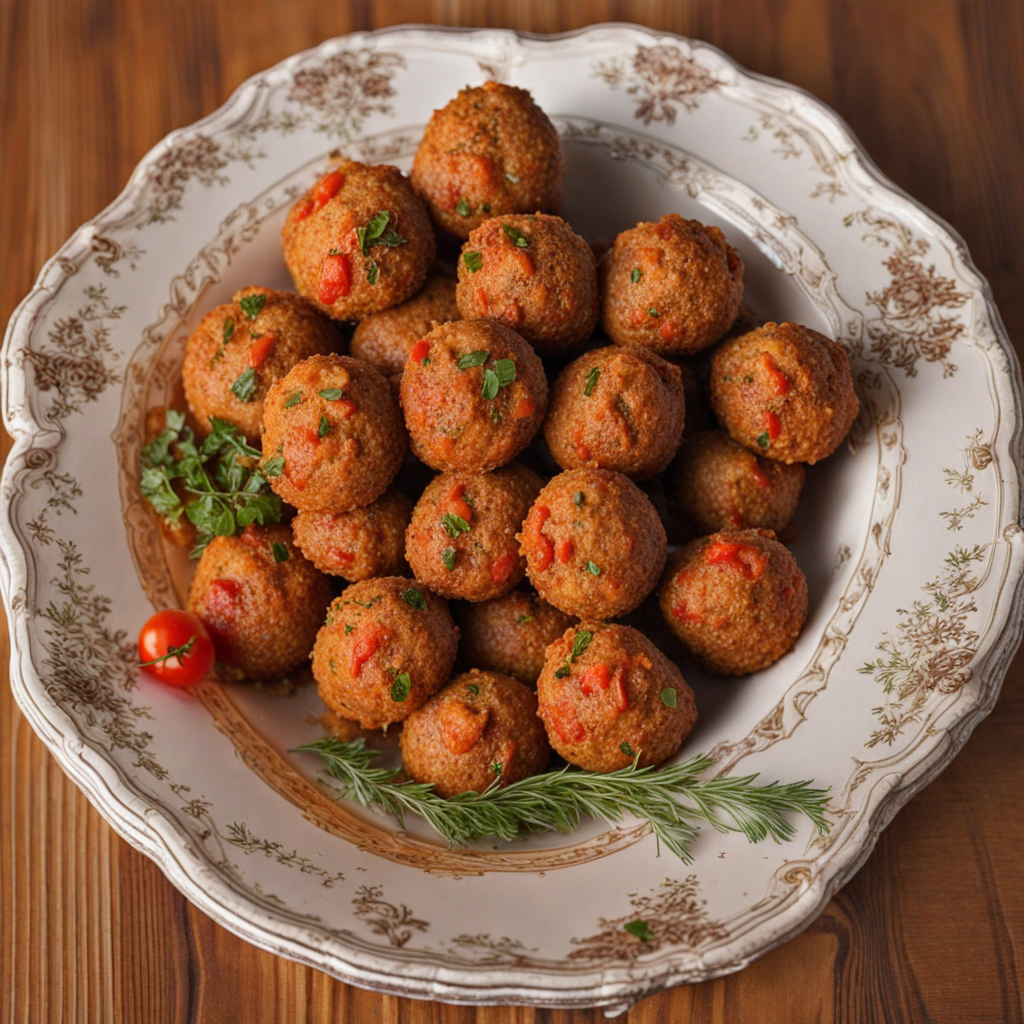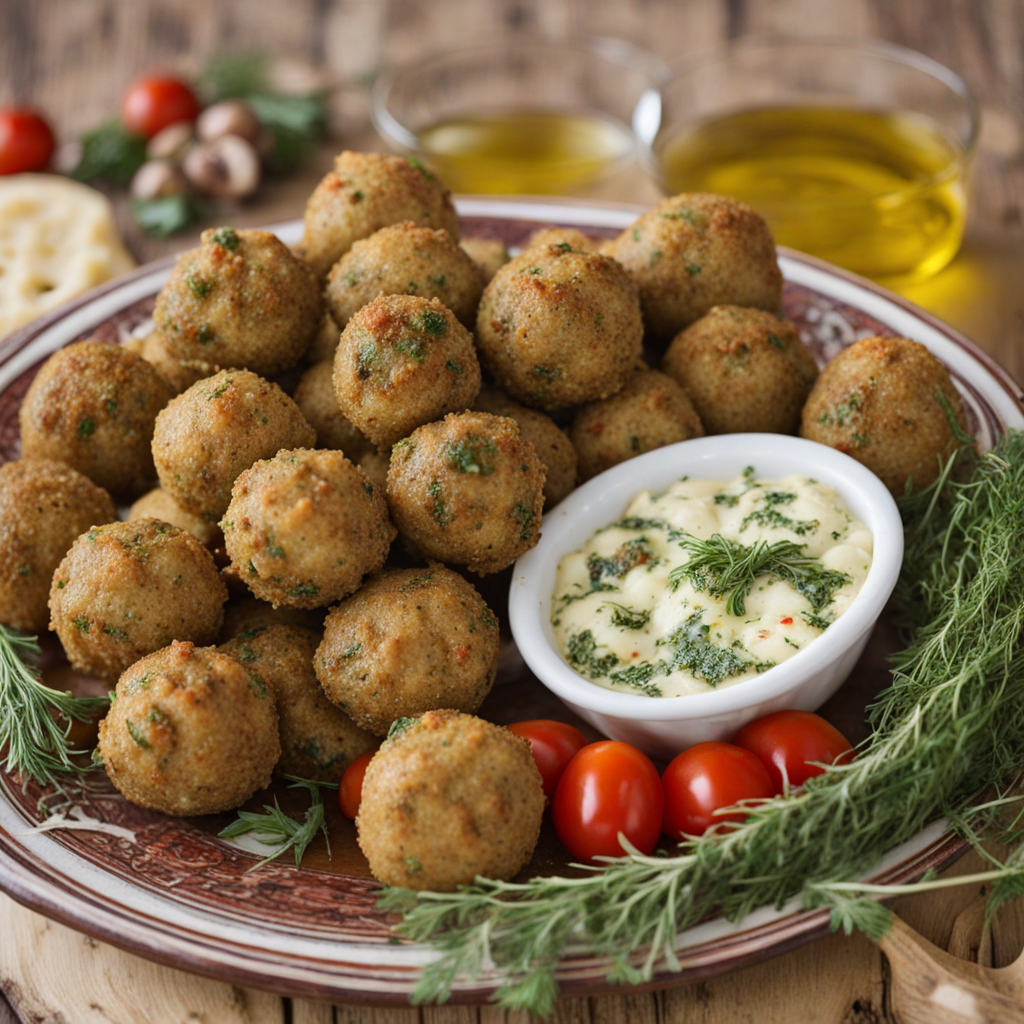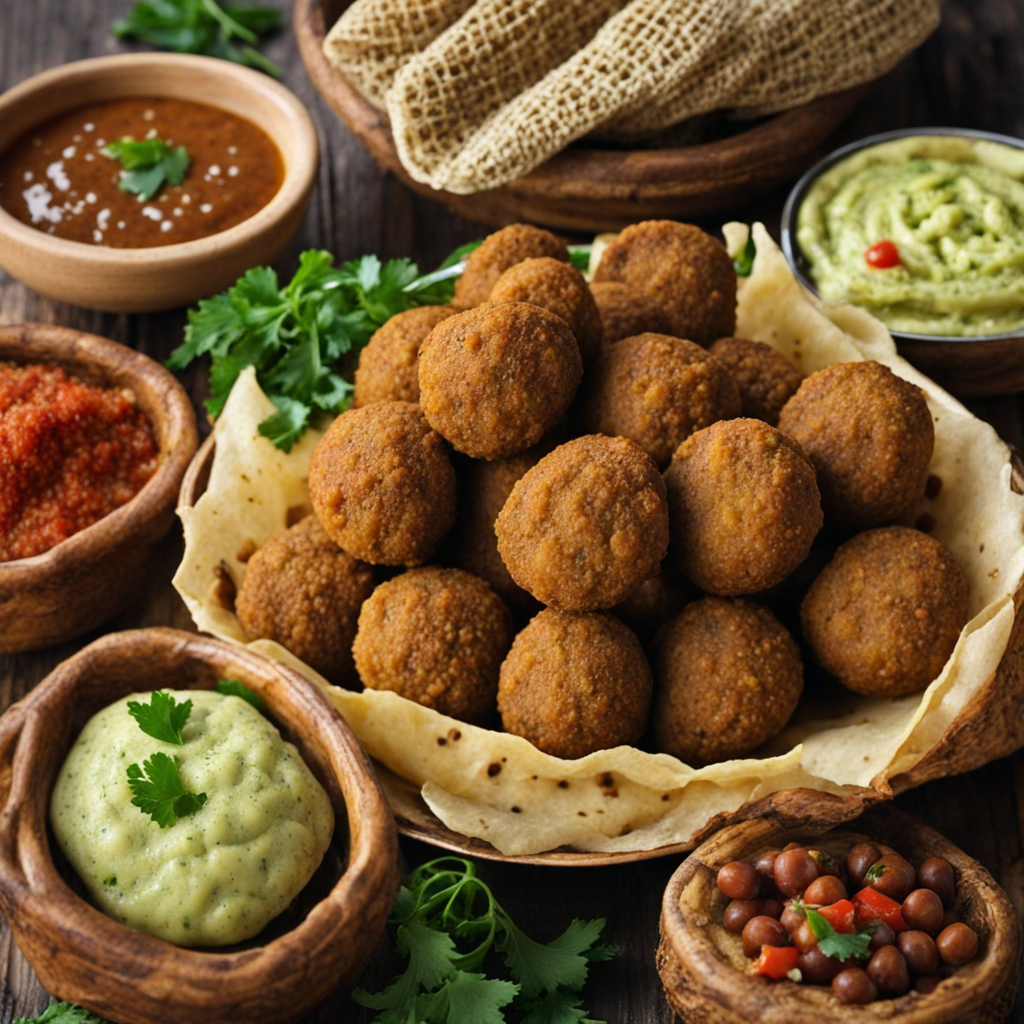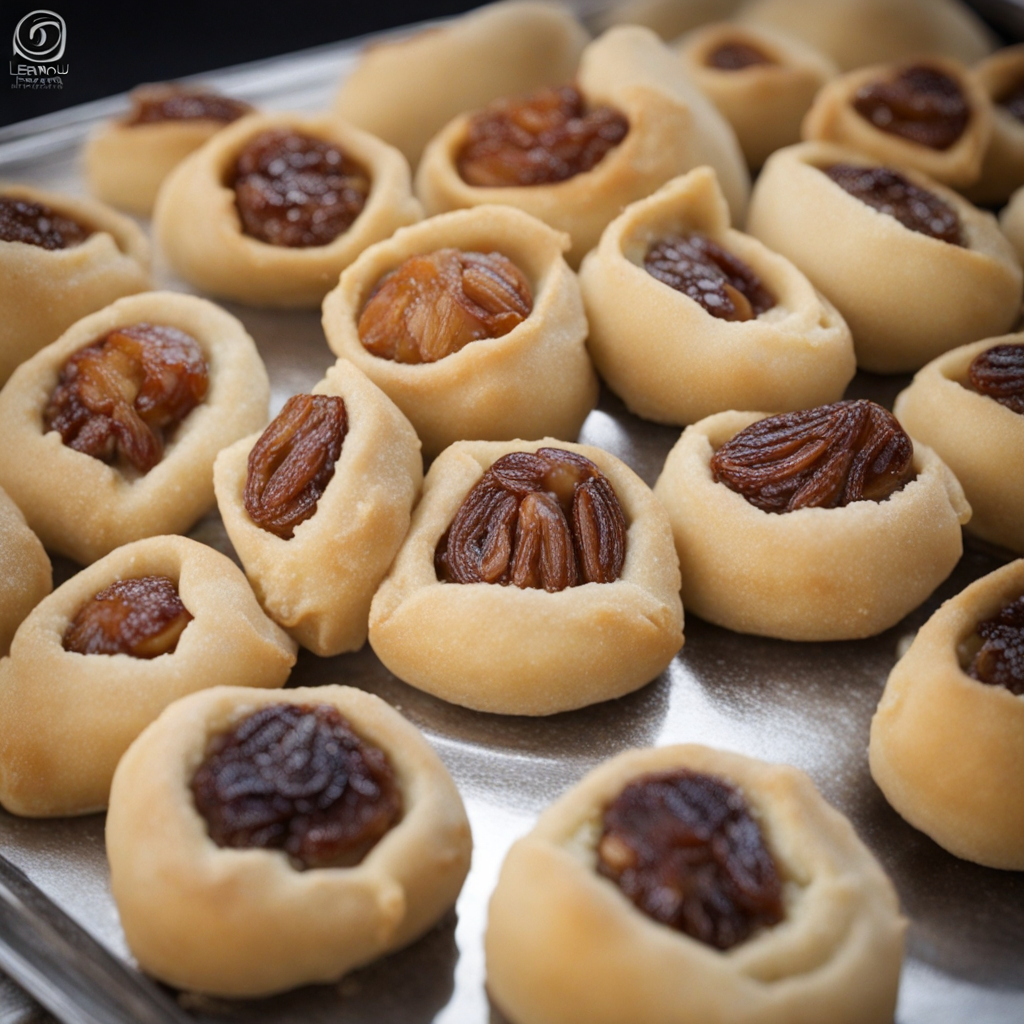Shanklish
Shanklish is a traditional Lebanese dish that has gained popularity throughout the Middle East, celebrated for its unique flavor profile and distinctive preparation. This dish consists of aged, salted cheese, typically made from cow's or sheep's milk, and is often coated with various spices, herbs, and sometimes vegetables. The origins of shanklish can be traced back to rural Lebanon, where it was traditionally crafted by farmers as a method of preserving surplus milk. This practice not only catered to the need for preservation but also created a product that could be enjoyed over an extended period. The flavor of shanklish is a delightful combination of tangy, salty, and earthy notes. The aging process enhances the cheese’s complexity, yielding a robust taste that can vary depending on the specific herbs and spices used in its preparation. The cheese itself has a crumbly texture, and when combined with the spices, it offers a piquant sensation that stimulates the palate. Commonly, shanklish is rolled in a mixture of za'atar, a blend of thyme, sesame seeds, and sumac, which adds an aromatic depth and a slight bitterness that balances the cheese's richness. Each region may have its own twist on the spices used, making every bite an exploration of local flavors. The preparation of shanklish is a meticulous process that speaks to the culinary traditions of Lebanon. Initially, milk is heated and then curdled using natural rennet or lemon juice. Once the curds form, they are drained and
How It Became This Dish
Origin of Shanklish Shanklish, a traditional Lebanese cheese, boasts a rich history that dates back centuries. Its origins can be traced to the mountainous regions of Lebanon, where shepherds and farmers utilized the abundant milk from their livestock. The name "Shanklish" is derived from the Arabic word "shankal," which means to press or mold, reflecting the method of cheese-making involved in its production. Traditionally, this cheese is made from cow's or sheep's milk and is known for its unique flavor, which intensifies as it matures. The process of making Shanklish is labor-intensive and requires a great deal of skill. The milk is first curdled and then drained to form a soft cheese. This cheese is then rolled into balls and coated with a mixture of dried herbs, often including thyme, za'atar, and sometimes crushed chili peppers, which not only enhance the flavor but also serve as a natural preservative. After being coated, the cheese balls are left to age, allowing the flavors to develop and intensify. \n\n Cultural Significance Shanklish holds a special place in Lebanese cuisine and culture. It is often served as an appetizer or part of a mezze platter, alongside olives, pickles, and fresh vegetables. The cheese is typically enjoyed with a drizzle of olive oil and a sprinkle of sumac, adding a zesty touch to its rich flavor. In many Lebanese households, Shanklish is not just a dish; it is a symbol of hospitality and community. The preparation and sharing of Shanklish often bring families and friends together, especially during festive occasions and gatherings. It is common to see Shanklish featured prominently during celebrations such as weddings, holidays, and family reunions, where it is enjoyed in a communal setting. The cheese is more than a culinary delight; it represents the traditions and values of Lebanese culture, reflecting the importance of food in fostering relationships and creating memories. \n\n Development Over Time Over the years, Shanklish has evolved while still retaining its traditional roots. In the early 20th century, as Lebanon underwent significant social and economic changes, the production of Shanklish began to shift from household kitchens to commercial dairies. This transition allowed for greater distribution and availability of the cheese, enabling it to reach a wider audience both locally and abroad. In addition to its growing popularity in Lebanon, Shanklish has found its way into the global culinary scene. Lebanese immigrants have introduced this unique cheese to various countries, particularly in the diaspora communities in the United States, Canada, and Australia. This international exposure has led to a resurgence of interest in traditional Lebanese foods, including Shanklish, as chefs and food enthusiasts seek to explore and celebrate Middle Eastern flavors. \n\n Regional Variations As Shanklish gained popularity, regional variations began to emerge, each reflecting the unique culinary practices and flavor profiles of different areas in Lebanon and beyond. For instance, in the Bekaa Valley, a region known for its agricultural richness, Shanklish may be made using local herbs and spices that give it a distinctive taste. In contrast, coastal areas might incorporate additional ingredients such as seafood or citrus, further diversifying the cheese's flavor profile. Moreover, as global food trends have evolved, innovative chefs have begun to experiment with Shanklish, incorporating it into modern dishes. From being blended into dips to being used as a topping for pizzas, the versatility of Shanklish has allowed it to transcend its traditional role, appealing to contemporary palates while still honoring its historical significance. \n\n Health and Nutritional Aspects In addition to its culinary appeal, Shanklish is also appreciated for its nutritional qualities. As a dairy product, it is rich in calcium, protein, and essential vitamins. The fermentation process involved in making Shanklish contributes to its probiotic content, which can be beneficial for gut health. Furthermore, the herbs used in its preparation not only enhance flavor but also provide various health benefits, making Shanklish a wholesome addition to any meal. Those who are lactose intolerant may find that they can enjoy Shanklish in moderation, as the aging process reduces lactose levels in the cheese. This characteristic, combined with its robust flavors, means that Shanklish can be enjoyed by a wider audience, further solidifying its place in both traditional and contemporary Lebanese cuisine. \n\n Modern Recognition In recent years, Shanklish has gained recognition beyond its regional roots, earning a place on international cheese boards and gourmet menus. Food festivals and culinary events celebrating Middle Eastern cuisine have showcased this unique cheese, allowing chefs to highlight its versatility and flavor. As global interest in artisanal and traditional food products grows, Shanklish stands out as a prime example of a culinary heritage that is both rich and evolving. With the rise of social media and food blogs, many food enthusiasts are rediscovering the joys of traditional Lebanese dishes, often sharing recipes and cooking tips that feature Shanklish. This digital platform has played a significant role in revitalizing interest in Lebanese cuisine, helping to ensure that Shanklish remains a staple in both local and international culinary scenes. \n\n Conclusion The history of Shanklish is a testament to the resilience and adaptability of traditional foods. From its humble beginnings in the mountains of Lebanon to its current status as a beloved cheese enjoyed worldwide, Shanklish embodies the spirit of Lebanese culture. As it continues to evolve and inspire new generations of chefs and home cooks alike, Shanklish remains a delicious reminder of the rich culinary heritage that Lebanon has to offer.
You may like
Discover local flavors from Lebanon







